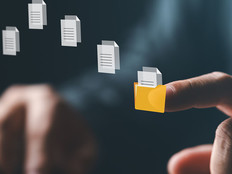Technical Hurdles to Cross-Agency Teaming Are Minor
From a purely technical perspective, enabling the sharing of calendars, chat and documents between agencies is not that difficult. In the past, this kind of cooperation might have been inhibited if agencies were running vastly different versions of software, which would have led to significant compatibility issues.
That may have been an issue a decade or so ago, but it is no longer the case. The pandemic has pushed agencies to aggressively adopt cloud-based tools for collaboration.
The widespread shift to telework that happened in 2020 and 2021 as a result of the pandemic forced many agencies to upgrade their IT infrastructure to support cloud-based productivity tools. That work enabled users working remotely to connect with colleagues and systems on-premises.
This lends itself naturally to enabling such communication between agencies. Sharing common platforms in the cloud should make interagency collaboration pretty seamless from a technical perspective. IT administrators may need to modify some security controls to enable sharing or disable access to certain files, but it is not very complicated.
RELATED: How will hybrid work evolve in government in 2022?
IT Leaders Must Address Data Sharing and Security
Technology may be the easy part of this equation, but there are other concerns IT leaders need to address.
One is educating the workforce on the do’s and don’ts of interagency collaboration. For example, users should not download sensitive material to their desktops and they should not email or download files from personal devices. IT admins should work to ensure that users only have access to the files they absolutely need.
Security and compliance concerns should also be addressed. Once a connection has been established between agencies, IT and cybersecurity leaders must put in place policies on how that information will flow, especially if data covered by HIPAA and other personally identifiable information is being shared in documents.
If agencies do not know who is going to be viewing information on the other end once it leaves their agency’s IT environment, that’s a potential problem. IT leaders should ensure that whoever is receiving information from the originating agency has all the security controls in place to remain compliant with the controls of the originating agency.
MORE FROM FEDTECH: How can government agencies improve customer service?
Depending on the agency, there may already be systems in place to collect and maintain log data on who is accessing certain types of data. Each agency that connects with another needs to be able to collect log data on who is accessing the originating agency’s information. All of this will require data silos to be knocked down and for IT leaders to trust their counterparts at other agencies, which may not be easy.
This kind of cross-agency collaboration may reveal inefficiencies in an agency’s processes. IT leaders and program managers should not see that as a threat or problem. Instead, it may reveal opportunities to reassign workers to more high-level tasks.
Agency collaboration could also open opportunities to be more efficient about how the work of government gets done. For example, workers at the Agriculture Department might learn things about land use from colleagues at the Interior Department that can help improve a program. Or workers at the Department of Health and Human Services might be able to accelerate research by connecting with workers at the Energy Department.
At the end of the day, the government teams truly interested in collaborating with colleagues at other agencies are going to try to improve the missions they are working on. They will thrive and won’t seek to block these kinds of interconnections. This approach will quickly identify pockets of people within the government who are embracing change and looking for ways to advance capabilities within their agencies.
This article is part of FedTech’s CapITal blog series. Please join the discussion on Twitter by using the #FedIT hashtag.







.png)



